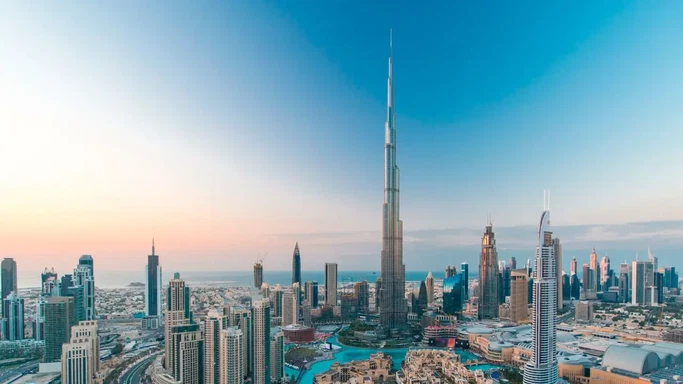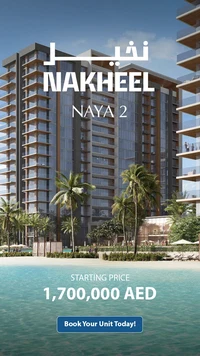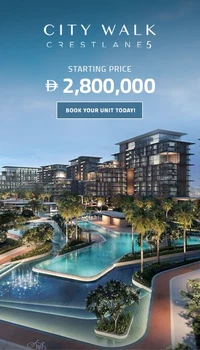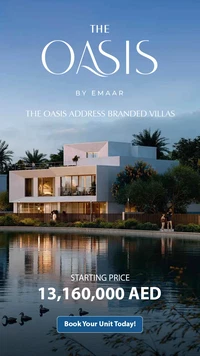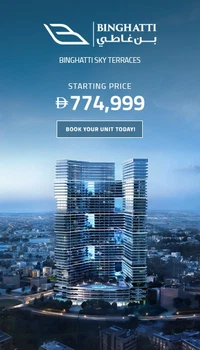The Burj Khalifa is an architectural masterpiece that is built in the middle of Dubai, which not only breaks records but also transforms the neighbouring real estate market. The demand for properties in and around the Burj Khalifa continues to be at premium prices due to the international appeal, central location, and a symbol of luxury.
This phenomenon is called the Burj Khalifa Effect and is driving unending demand in Downtown Dubai. The world’s highest tower is irresistible to both investors with decent returns and the residents with prestige in mind. This blog presents the way one building still redefines the worth of property in one of the active cities of the world.
The Symbolic Power of the Burj Khalifa
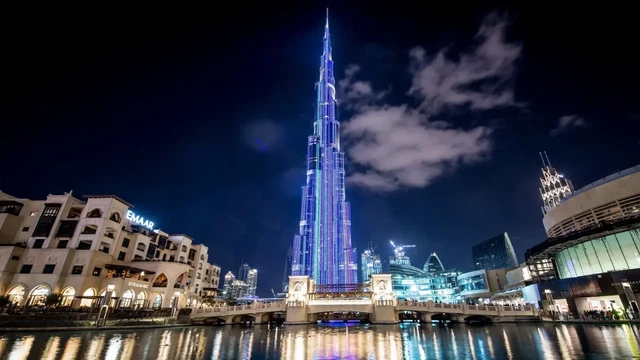
Burj Khalifa is not just the tallest tower in the world, but it is a living marker of prestige, ambitions, and desire that exudes into every square foot in the region of Downtown Dubai. Buyers are not buying a space but the image that is spread all over the world, which translates to matchless quality. The tower has residential apartments starting from AED 2,550,000 and going all the way up to penthouses starting from AED 30,000,000 , with the apartment per sqft being priced at AED 2960.
Burj Khalifa is premium priced relative to other neighboring Downtown towers with average rates in the building currently at 3,050,000 AED for 1-bed apartments, which is quite high compared to standards in other flagship buildings such as Burj Vista (AED 2,337,000), which however attract significant rents (5.62 ROI) Deep down, the symbolic force of Burj Khalifa turns real estate into a status symbol, living in it signals success and exclusivity, belonging to something that has made it to the iconic status.
Urban Planning and Lifestyle Magnet
The downtown area of Dubai has been transformed with visionary design making it more pedestrian friendly, it has unified transport services, and various choices on lifestyles. The Burj Khalifa does not just guarantee the skyline, but also an abundance of a rich ecosystem which is seen by residents, tourists, and investors on a daily basis.
1. Master-Planned Connectivity
Downtown Dubai is a high-densitymixed-use core built around the Burj Khalifa. There is also a highly integrated transport network comprising the Burj Khalifa/Dubai Mall Metro station, and large pedestrian corridors which the residential area with offices, hotels, and shops, and minimizes travelling by vehicle as well as promotes urban circulation.
2. Lifestyle Hubs. & Public Spaces
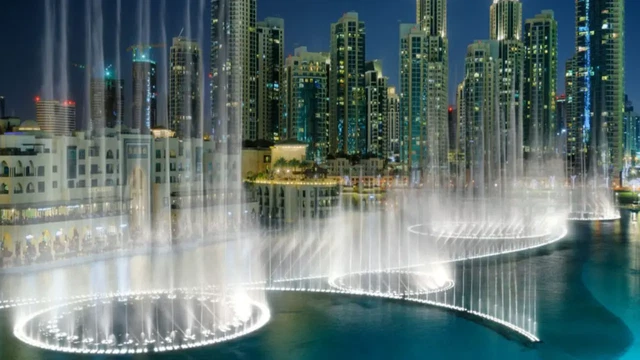
It is engulfed in the most outstanding attraction centres in the world, including the Dubai Mall, the Dubai Fountain, Burj Park, and Souk al Bahar. The city is an awakened place where individuals can get access to luxury retail outlets, gourmet restaurants, green parks, and public events throughout the year. All this makes the urban environment more prosperous and a mix of entertainment, culture, and comfort.
3. Walkability/ Climate-Responsive Design
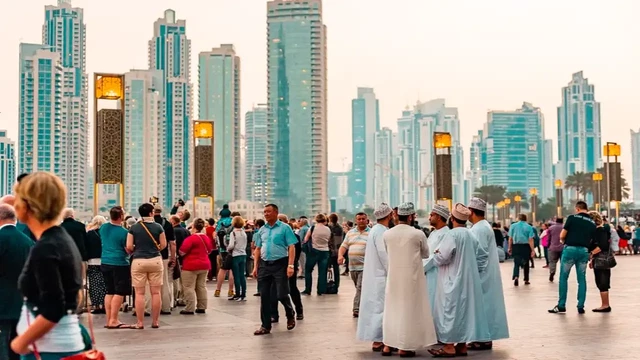
Dubai is hot, but the Downtown is a pedestrian-friendly area; it includes shady arcades, a downtown cooling collector, air-conditioned walkways, and a shaded promenade. The design promotes active activities outside, but it is comfortable.
4. Mixed-Use Synergy
The residential, commercial, cultural, and entertainment zones that are available in Downtown Dubai blend into a harmonious ecosystem. It has everything within walking distance, including Dubai Opera and five-star hotels, hence it offers everything residents need to buy and investors may wish to invest in.
Economic Ripple Effect on Surrounding Property
The presence of Burj Khalifa exudes well beyond its foundation, generating quantifiable economic elevation all through Central Dubai and the associated regions.
1. Edged Value Growth
- Downtown Dubai property values were relatively steady at AED 2,870 per sqft, up 12.2 per cent in Q2 2025 compared to the previous one in 2024, and sold about 8.1 billion AED in sales through 1,706 deals.
2. Enormous Sales Traction
- Sales at the Burj Khalifa were AED 467.1 million (~US127 million) in 2024.
- Square foot average pricing reached AED 3,000, which was about 80 per cent higher than that of the city average of AED 1,680 in Dubai.
- One bedrooms gave average returns of 5.82 per cent in Downtown Dubai as of H1 2025.
3. Infrastructure & Investment Momentum
- The great demand leads to continuous renovation of the infrastructure: more plants, Metro construction, an area friendly to pedestrians, all of which are stimulated by the influence of Burj.
- High-net-worth investors as well as international developers are drawn toward landmark advantages and ecological quality, hence resourcefulness coming together.
4. Rental Trends in Downtown Dubai
| Apartment Type | Average Rental Price |
|---|---|
| Studio | 82,000 |
| 1-Bedroom | 136,000 |
| 2-Bedroom | 264,500 |
| 3-Bedroom | 1,134,500 |
| 4-Bedroom | 1,776,000 |
| Villa Type | Average Rental Price |
|---|---|
| 1-Bedroom | 133,000 |
| 2-Bedroom | 300,000 |
| 3-Bedroom | 337,000 |
5. Sales Trends in Downtown Dubai
| Apartment Type | Average Sales Price |
|---|---|
| Studio | 1,410,000 |
| 1-Bedroom | 2,295,000 |
| 2-Bedroom | 4,134,000 |
| 3-Bedroom | 6,774,000 |
| 4-Bedroom | 28,215,000 |
| Villa Type | Average Sales Price |
|---|---|
| 2-Bedroom | 4,450,000 |
| 3-Bedroom | 8,625,000 |
6. ROI in Downtown Dubai
| Apartment Type | ROI |
|---|---|
| Studio | 5.35 % |
| 1-Bedroom | 5.82 % |
| 2-Bedroom | 5.69 % |
| 3-Bedroom | 5.40 % |
| 4-Bedroom | 6.34 % |
| Villa Type | ROI |
|---|---|
| 2-Bedroom | 4.24 % |
| 3-Bedroom | 4.56 % |
Investor Psychology and International Appeal
The mere existence of the Burj Khalifa evokes a powerful emotional reaction in the investor community. The building indicates a sense of stability, status, and an obvious gesture of faith in the future of Dubai. To overseas customers, the decision to buy a house in one of the areas right in front of the tower is not just any real estate buying act on their part; it is all about gaining power in the international arena.
I) Emotional and Behavioral Drivers
- The bare fact of owning space around the tallest building in the world is a mark of the success that investors pay great prices for.
- The fun and publicity surrounding the tower are promoting a sense of buzz, where the buyers may be tempted to strike when they see an opportunity.
II) Strategic and Financial Factor
- Burj-adjacent properties can also serve as a form of capital protection, according to lots of investors, due to the persistence of demand.
- A wide pool of international buyers helps in fast turnovers and the ease of exiting the business anywhere in the world.
- The rent generation of the tower is symbolic; it will attract business travellers as well as high-end tourists, both in the short as well and in the long term.
Future Outlook
The impact of Burj Khalifa on the property demand will not wear off; on the contrary, it is on the rise. As cities get upgraded, new skyscrapers, technology and environmental improvements are added to them, as well as steadfast global interest, it is going to have even greater gravitational force on values in years to come.
1. Premium Sustenance
The reputation of the Burj Khalifa as an innovative and luxurious building has not been shaken. As Downtown Dubai has already established itself as a hot-spot location on the world map, the properties surrounding the tower are likely to sustain (and even increase) their price premiums. As per the latest pricing, one-bedroom apartment prices start from AED 2,295,000, 2-bedroom and 3-bedroom prices start from AED 4,134,000 and AED 6,774,000, respectively.
2. Future Neighbourhood Upgrade
The new development of Downtown, such as Zabeel Plaza, Creek Edge, and the improvement of Burj Park, will elevate the public space of the district. The more greenery and open spaces with uninterrupted views will be a simple but effective way to value the property and lifestyle, and strengthen the magnetism of the Burj Khalifa.
3. Contending’s Icons, yet Strengthened Magnetism
There are developments such as Dubai Creek Tower and the proposed super-towers of the Mohammed bin Rashid City, which will develop new landmarks. These will instead support and confirm the iconic status of the Burj Khalifa, and they will not weaken the demand.
4. Smart and Green Retrofitting
The Burj Khalifa and the district where it is located are to be the subject of continued green retrofits, energy-saving renovations, smart house systems, and electric car-ready parking. These advancements will allow retaining the desirability of the area to modern, eco-conscious buyers, to keep the high prices justified.
5. The Secure Investment Foundation
Property cycles caused by macro components can go up and down, but the region of the Burj Khalifa has shown to be a strong performer during regional downturns and also amid international uncertainties.
Closing In!
Burj Khalifa is not just a landmark-setting building; it also determines the pricing of real estate and informs the behaviour of investors as well as structural development in Dubai. Its symbolic high status, good ROI prospects, and the infrastructure of life around it make it stir up a ripple effect, swelling demand Downtown as well as beyond.
Whether it is end users or yield-oriented investors, the attraction is emotional and strategic. The Burj will always be a focal point as Dubai keeps growing and the neighbourhoods around it flourish due to the increased price stability, reinforced by the tower itself. As they say, in a nutshell, it is more than a symbol of the skyline; it is a permanent generator of property demand in the very centre of the city.
Read More
